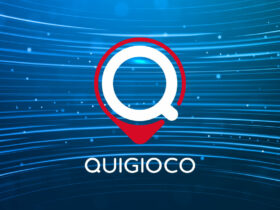Their ability to innovate has forced traditional institutions to forge alliances with FinTechs or, at least, to study their creative approaches.
The consolidation of the FinTech ecosystem, which took place less than 10 years ago, is about to represent one of the great revolutions in the sector. After the digitization process initiated since the beginning of this millennium, many traditional institutions believed that the most important work had already been done and that the next steps would be a gradual improvement and correction of their systems, as well as a gradual assimilation by the their customers. However, the emergence of FinTechs was perceived as a potential threat to their market dominance.
These new companies have used the latest technologies to offer new services or new ways of delivering existing services. Innovation was the key that allowed them to be well received by a more modern society, so much so that their potential audience is wider and better adapted to their proposals. One of the strengths is the study that FinTech companies have carried out in order to understand how technology can better adapt to the needs, tastes and habits of today’s society, instead of forcing users to adapt to them.
New ideas and concepts
This approach has resulted in interesting proposals that highlight how businesses are so creative and innovative. An exemplary case is that of the German company NAGA, which deals with investments. On the one hand, the possibilities it offers for this sector of the financial market are very broad, with over 1,000 assets available for trading, including commodities, forex, indices, cryptocurrencies, CFDs, stocks, futures and ETFs. The real innovation came, however, with the way the company presented itself as a social investment platform.

This concept is based on changing the way the company relates to the customer, often on an exclusive basis. When we talk about NAGA Trade, the idea is to strengthen the communication channels with the user, but also to allow and facilitate contact between the different traders of the platform, so that they can enrich their knowledge and experiences thanks to socialization. . At NAGA, the goal is for the client to be educated (there are modern tools for this) and have good information to make his trading decisions. The trader is placed in a much more active position and communication is much more in line with current trends brought about by new technologies.
Renew or disappear
Again, we see a different style of dealing with customers, much more in line with current behaviors. This, coupled with the automation of many processes and related benefits, has been the great advantage of FinTechs, which has meant that many traditional institutions have had to choose between two options: create alliances with them or, at least, take note of their innovations. to be able to incorporate them. The Bank of Italy has already created its own FinTech channel in order to better communicate with its customers and better adapt to their needs. Mediobanca, in turn, is fully committed to this ecosystem and is creating strong alliances in the area of installment payments with companies (start-ups) dedicated to this market niche.
Renovation seems necessary for many of the institutions that have dominated the sector in recent decades. The emergence of FinTech companies, such as the example of NAGA, has revealed that their modality can be anchored to other times and needs to be updated, especially when it has been found that new firms compete for market share (the same NAGA already has more than a million customer accounts) and they seem to be more appreciated by users thanks to the innovations they bring and the role they are giving them, instead of finding a more dated service and a contact too focused on commercial aspects.
















Leave a Reply
View Comments